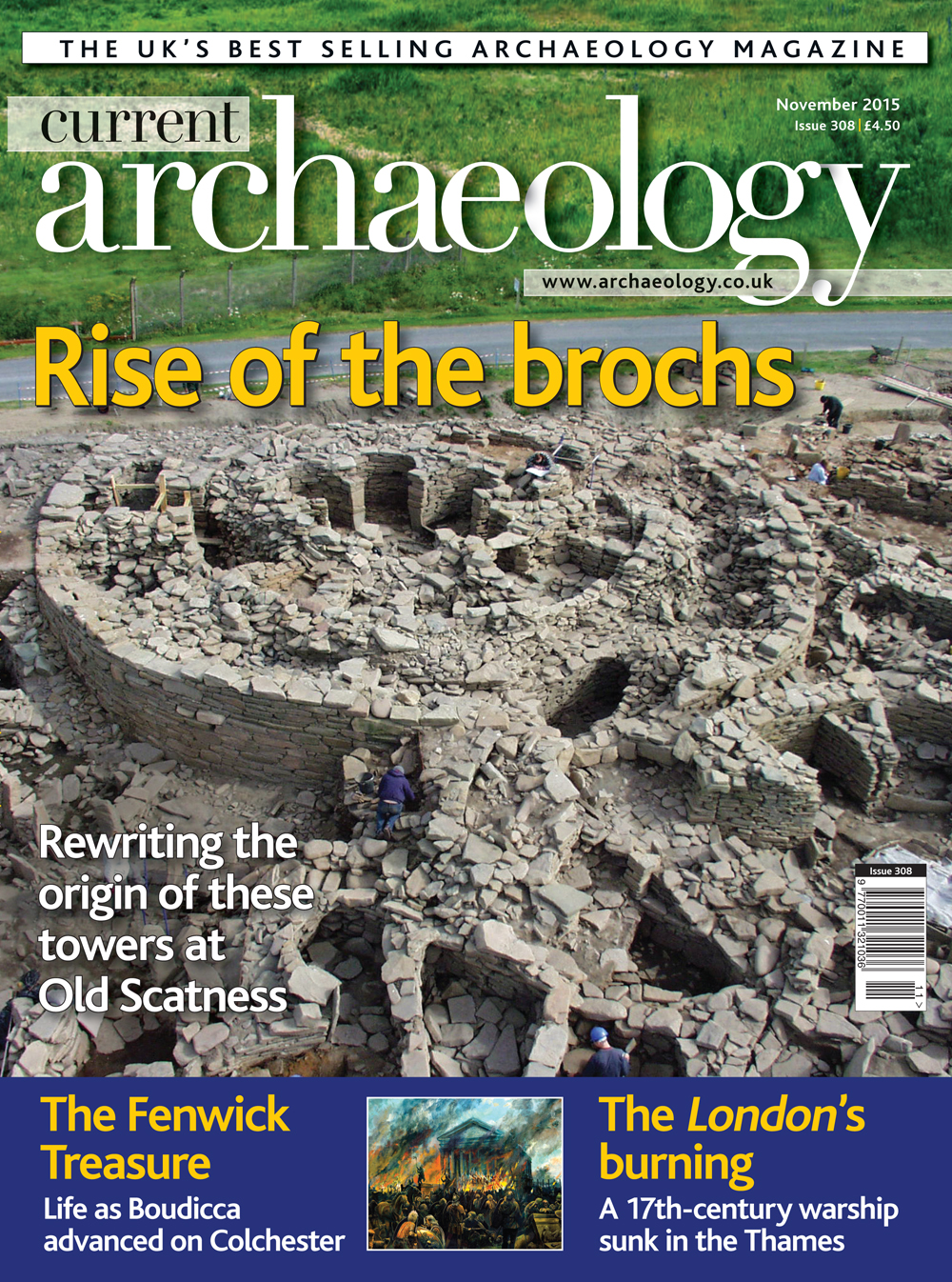In March 1665 the London sailed up the Thames to collect her captain. Although this ship was laden with munitions, ready for action in the Second Anglo-Dutch War, her Thames voyage provided an opportunity for a pleasure cruise. Numerous ladies were on board when the London’s powder store was accidentally ignited, sending the ship – and most of her passengers – to the bottom. Now, investigation of the wreck is offering a glimpse of 17th-century naval life.
The fire that ravaged Colchester in AD 60 or 61 was anything but accidental. Boudicca’s warriors systematically sacked this colony for Roman military veterans and slaughtered its inhabitants. The discovery of a hoard of jewellery concealed in a clay floor has provided a poignant insight into a couple who found themselves inBoudicca’s path. Bones among the detritus subsequently strewn across the floor testify to the human cost that accompanied the death of a city.
At Old Scatness it was the ground, rather than any jewellery hidden within it, that was valued by the local community. They maximised the yield from their fields by artificially enhancing the soil. Dates from the broch that once dominated the site indicate this monumental status symbol was raised surprisingly early.
By the medieval period, founding religious houses was a popular way for prominent figures to show off their wealth. One such priory was established at Selborne, but it fizzled out before the Dissolution of the Monasteries,preserving a wealth of information about its operation.
Matt Symonds
IN THIS ISSUE:/n
FEATURES/n
THELONDON’S BURNING/n
A 17th-century warship sunk in the Thames
Destroyed in a devastating explosion, the London was lost in the murky depths ofthe Thames Estuary for 350 years. Now archaeologists are bringing her secretsto light once more.
THE FENWICK TREASURE/n
Colchester during the Boudiccan War of Independence
What happened to the inhabitants of Roman Colchester when the Iceni attacked inAD 60/61? Human remains and carefully hidden belongings found among charreddebris offer poignant insights into this brutal episode.
REWRITING THE ORIGIN OF THE BROCH BUILDERS/n
Exploring fortifications and farming at Old Scatness
Long-running excavations at a Shetland Iron Age settlement tell a tale of changeand continuity in a prehistoric community – and have transformed our understandingof when such structures were built.
SELBORNE PRIORY/n
Building for salvation
How were medieval monasteries founded? Newly published research provides a casestudy of the rise and fall of a religious house in Hampshire.
NEWS/n
Huge new monument at Durrington Walls; IdentifyingArmada wrecks off Co. Sligo; Prehistoric food for thought atLlanmaes; Excavating victims of London’s last plague; St Piran’s Oratory uncovered
Special report
Death in the cathedral
REGULARS/n
Reviews
Prehistoric Copper Mining in Europe:5500-500 BC; Archaeology: The Basics;Ut Milites Dicuntur; In Search of Vikings
Sherds
Chris Catling’s irreverent take on heritage issues
Odd Socs
The British Stickmakers Guild

